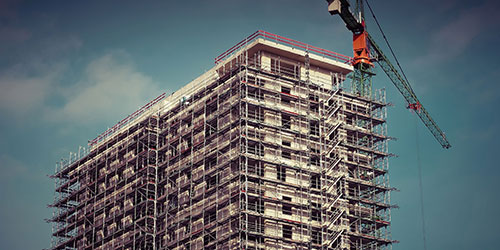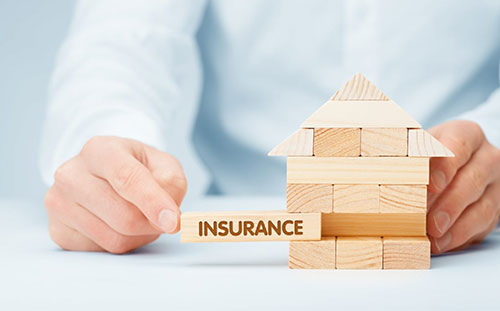
Building Liability Insurance Coverage
- Apartment Buildings
- Builders Risks
- Commercial Buildings
- Commercial Real Estate
- Creative Space
- Developers
- Habitational
- Hostels
- Investment Properties
- Investors
- Landlords
- Mixed Use
- Multifamily
- Old Buildings
- New Construction
- Real Estate Developers
- Rental Properties
- Retail
- Hostels
- Single Family Rental Schedule
- Strip Malls
- Vacant Buildings
- Warehouse
Building Liability Insurance Coverage
Building Liability Insurance coverage is the coverage that protects you from third party lawsuits brought from visitors who get injured while at your property. For buildings that are occupied and operational, the charge for landlord liability is nominal.
The coverage is rated based on the occupancy of the property. For multifamily properties, the liability is typically rated on the number of units. For landlords with non habitational properties, the policies will rate on the area of the building to determine the price for liability insurance.
There are a few companies that chose to rate on receipts, annual rents for liability. For policies rated on receipts, there will be an annual audit to determine if you had more exposure than what was rated for.
You need to confirm the exposure your policy is rated on to avoid any surprises.


Liability Risk Management
Liability risk management requires that you know your building. You must know what the tenants in your building do, how your building is designed to operate and the physical condition of the property.
When assessing your property, answer these three risk management questions:
1) Can we avoid the risk?
2) Can we minimize the risk?
3) Can we transfer the risk?
You have options as a landlord to manage your risk.
The insurance company will inspect your property periodically to confirm the condition is safe and acceptable. This will include trip and fall hazards like walkways, curbs, stairways, and stair railings for any loose railings or uneven surfaces.
The life safety issues such as proper working fire alarms will be checked to determine if you have enough extinguishers, where they are placed and if they have been inspected recently. If your building contains a fire suppression system, the inspector will check to confirm that the system has been serviced and inspected recently.
For older properties, the electrical panels will be inspected. There are a few brands of electrical panels that have been recalled for fires caused due to their failure.
If their loss control report provides information about issues that need to be addressed, you will be given days to attend to and then notify the carrier that you have addressed.
Risk Transfer
An Insurance policy is a risk transfer tool. As a landlord, you are able to transfer some of your risk created by your tenant to your tenant via your lease.
A common feature of a commercial lease includes an insurance requirement that the tenant provide acceptable general liability insurance naming you, the landlord as an Additional Insured. For most commercial tenants, this is an automatic feature of their insurance policies.
For multifamily properties, you will need to request that the tenant provide Renters Insurance. To enforce your lease, it is important that you have a system to monitor the tenants insurance so that you are notified if it is cancelled for non payment.
Over all, landlords find that when they require tenants to provide insurance that tenant caused damage is taken care of by the tenants policy. This keeps your policy claim free, and your premiums low.


Building Property Insurance
Building Insurance coverage covers the physical building. This is the first part coverage when insuring your building. When you have a tenant, you can transfer this risk to your tenant through the lease. There are different schools of thought on this matter.
For a triple net lease, all operating expenses are the responsibility of the tenant. In this situation, the lease will require that the tenant list you as an additional insured for liability and an Additional Insured for the Liability.
This is nice when the tenant is a known entity, and you trust that they will promptly pay their insurance. However, if they fail to pay, there can be a gap in insurance and you could have an uncovered loss. For this reason, it is wise to consider maintaining control of the building insurance coverage yourself and charging the tenant for their portion of the coverage.
Providing Building LIability Insurance Coverage for Property Owners

One of the most common risks faced by all businesses is financial loss caused by legal liability for injuries to persons or damage to the property of others. Often equated as Building Liability Insurance Coverage and one of the most important classes of insurance coverage a business can have.
Building Liability Insurance Coverage represents the broad category of coverage’s available against loss of property, damage or other liabilities not directly concerned with Building Property Insurance Coverage.
The following are widely used coverage’s to cover building liability exposures:
Building Liability Insurance Coverage
General Liability
Bodily Injury
Property Damage
Personal Injury
Advertising Injury
Medical Payments
Premises Liability
Completed Operations
Product Liability
Tenants Liability
Contractors Liability
Hired & Non Owned Liability
Umbrella Liability
Property Manager Errors & Omissions
Employment Practice Liability
Cyber Liability

Reach out to me when you’re considering Building Insurance. I will provide you with comparative Building Insurance quotes from multiple insurance carriers so you can get the best possible combination of coverage and cost.
As a Building Insurance Broker I help property owners manage risk through Building Insurance.
